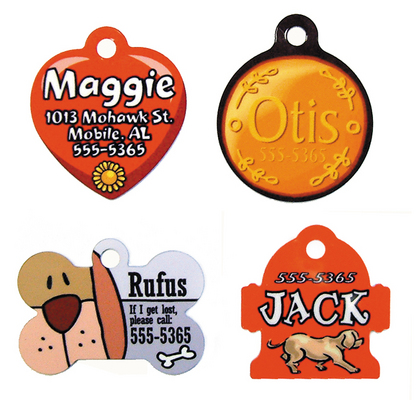News & Trends
Stitching up Detroit
Published
9 years agoon

To Meghan Sobocienski, age is but a number. “Solutions to struggles stem from the community and from young people,” says the Grace in Action Collectives (www.graceinactiondetroit.org) director. In the summer of 2013, with little in her toolbox but a masters in theology, a supportive congregation, and a passionate 14-year-old, Meghan looked to screen printing to stir up ambition in the youth of Southwest Detroit, a neighborhood where high school dropout rates have been known to hit nearly 50 percent.
To Meghan Sobocienski, age is but a number. “Solutions to struggles stem from the community and from young people,” says the Grace in Action Collectives (www.graceinactiondetroit.org) director. In the summer of 2013, with little in her toolbox but a masters in theology, a supportive congregation, and a passionate 14-year-old, Meghan looked to screen printing to stir up ambition in the youth of Southwest Detroit, a neighborhood where high school dropout rates have been known to hit nearly 50 percent.
After the success of a youth collective focused on web design, Meghan and the Grace in Action church were searching for another opportunity to allow youth to grow and express their talent when they found David. The high school freshman had just fallen in love with screen printing
at a summer camp for art entrepreneurs and was determined to learn more about the art and use it to build a successful future – even if it meant teaching himself. He was exactly who Meghan was looking for to spearhead a youth-driven collective that would, in her words, “build on the skills that already exist in these young people.”
Together they rounded up 10 kids, many of them David’s friends and family. The next step was to find some cash. Grace in Action, a 501(c)(3) nonprofit organization, was able to cobble together the funds – including a $50,000 grant from Wheat Ridge Ministries along with $21,500 in crowd- funding on the WeRaise platform – to purchase three screen presses from Jensen, Ryonet, and Riley Hopkins Jr. Before they knew it, screen printing and graphic design collective Stitching up Detroit was born.
Better than Cheetos
T-shirts don’t print themselves, however. Meghan had no background whatsoever in screen printing – “although I’ve become quite good,” she laughs – so the group teamed up with a local screen printer from Uganda who was looking to share a storefront space. In return, he offered tips on proper techniques, color separation, and more. And it paid off: less than two years later, business is booming. When Meghan spoke with Screen Printing in early February, Stitching up Detroit was booked with orders on all three presses all the way through July.
“The print world is the best,” she says. “It’s an awesome market. Schools, family reunions, sports teams, youth groups – they need T-shirts constantly.”
At first, the collective founders struggled to decide whether the primary focus was on education or on business. “I want people to work with us because we produce a quality product,” Meghan says. “But they also get to be a part of a journey where someone’s learning and growing.”
It was decided that education should come first. The revenue they produce goes toward an earnings program: Committed kids can earn tablets, MacBooks, and gift cards to launch their own websites and portfolios. After a few years, veteran students can also earn wages for training younger members.
The idea is to give the students the tools to continue to teach themselves. “If you had just paid me,” one student joked to Meghan, “I would have gone out and bought a bunch of hot Cheetos.”
No Fit, No Problem
High school juniors David and Pacal, one of David’s early recruits, have come a long way in those two short years, evolving from students into instructors for the younger kids. “I still feel like a student just pretending to be a teacher,” says Pacal, but he has no problem reeling off tips that any veteran screen printer would nod to, including keeping everything as clean as possible, and keeping your cool at all times.
Advertisement
Advertisement
But what the program teaches extends far beyond screen printing or graphic design. “Every single piece is a learning lesson,” says Meghan, citing students who have developed discipline, project and time management, responsibility, and resourcefulness.
For example, the group recently took on a project to decorate an order of canvas bags. When the blank bags came in, however, they realized they wouldn’t fit on the pallet. David decided to unscrew the pallet from the machine and fit it inside the bag; print the first color; then line the screen up by hand and print the second.
“We always figure out how to make it work,” says Meghan. “Nobody really teaches that. We create the environment for them to be able
to experiment, innovate, and learn. It’s not an adult who figured that out; it was a kid.”
It’s that get-your-hands-dirty sort of experience that is truly irreplaceable in a student’s life. “Screen printing is one of those things you can read all about, but when you actually get out there and do it yourself, you’ll come across problems that weren’t ever in a book, and you just have to deal with them,” Pacal says.
Fail and Fail Again
Another perk – or, as anyone who’s ever served a customer would call it, a headache – for veteran students is the chance to work one-on-one with customers, forcing them to grow up almost overnight. “I’ve learned a lot about life through dealing with customers,” says David. “People can be complicated.”
Meghan agrees that providing a service for a client – and not always hitting the mark – is a teaching tool: “They are getting to experience what it’s like to create a design and have it not be good enough for someone and to have to go back and say, ‘What needs to be different? You’re the customer, I’m working for you, and I need to figure out what you need and how to produce it.’” But she’s not afraid to let them fail, either: “We protect young people a lot and don’t let them try things out.”
The cliché we’ve all learned about failure is that you just have to get back up and try again; success can’t evade us forever. Today, the collective
is booked and booming, and both Pacal and David are showing off projects that are the fruits of their own personal efforts – failures and all.
Pacal is working on his first four-color shirt that he has designed and printed, completely on his own, for a traveling food drive, while David is taking a trip into the past, printing shirts for his old junior high school. The sense of pride the two feel in having learned and grown so much in just a few short years is obvious. “I remember being an eighth grader and being selected to design the shirts as a student. Now I’m designing the shirts at the school that I went to, but as a professional,” David says.
“People screw up all the time. It’s a journey we’ve been on, getting better and better,” adds Pacal. “Now we’re at the point where we can print a hundred shirts without a single mistake.”
From Garage to Greatness
The journey certainly hasn’t been without its share of bumps. The collective has hopped from space to space, blowing fuses left and right, even settling in Meghan’s garage for a time. But a recently donated funeral parlor will soon be a place to call home – after, of course, another learning experience. The students have taken tours of local screen printers’ shops and are now hard at work renovating and designing the space as their very own.
In addition to the renovation of the facility, Meghan hopes to put together the resources, including a fourth press and some additional transportation, to grow the program from 10 to 15 students in the next year or two. The students are looking forward, as well, with Pacal hoping to attend graphic design school and David’s personal screen-printing business already taking off.
“I’m totally the person that jumps in the deep end of the pool,” Meghan says. Supported by a fearless, patient leader, the group has become more than a successful business or an after-school hangout. Pacal’s stories make it seem more like a family. The day he spoke with Screen Printing, Meghan was giving him a ride to the church when he realized he had left the tea kettle on back home.
“She had no problem just turning around. She has a ton of patience.” When asked to choose a favorite memory, he can’t settle on one: “Every day we’re there, we’re having fun.”

SPONSORED VIDEO
Let’s Talk About It
Creating a More Diverse and Inclusive Screen Printing Industry
LET’S TALK About It: Part 3 discusses how four screen printers have employed people with disabilities, why you should consider doing the same, the resources that are available, and more. Watch the live webinar, held August 16, moderated by Adrienne Palmer, editor-in-chief, Screen Printing magazine, with panelists Ali Banholzer, Amber Massey, Ryan Moor, and Jed Seifert. The multi-part series is hosted exclusively by ROQ.US and U.N.I.T.E Together. Let’s Talk About It: Part 1 focused on Black, female screen printers and can be watched here; Part 2 focused on the LGBTQ+ community and can be watched here.
You may like
Advertisement

Arcus Printers Barracuda Conveyor Flatbed Cutter

The Profit Impact of a Market Dominating Position

Inkcups Announces New CEO and Leadership Restructure
Advertisement
Subscribe

Bulletins
Get the most important news and business ideas from Screen Printing magazine's news bulletin.
Advertisement
Most Popular
-

 Case Studies2 months ago
Case Studies2 months agoHigh-Density Inks Help Specialty Printing Take Center Stage
-

 Art, Ad, or Alchemy2 months ago
Art, Ad, or Alchemy2 months agoF&I Printing Is Everywhere!
-

 Andy MacDougall2 months ago
Andy MacDougall2 months agoFunctional and Industrial Printing is EVERYWHERE!
-

 Columns3 weeks ago
Columns3 weeks ago8 Marketing Mistakes Not to Make When Promoting Your Screen Printing Services Online
-

 Editor's Note3 weeks ago
Editor's Note3 weeks agoLivin’ the High Life
-

 Marshall Atkinson3 weeks ago
Marshall Atkinson3 weeks agoHow to Create a Winning Culture in Your Screen-Printing Business
-

 Thomas Trimingham2 months ago
Thomas Trimingham2 months ago“Magic” Marketing for Screen Printing Shops
-

 News & Trends2 months ago
News & Trends2 months agoWhat Are ZALPHAS and How Can You Serve Them in Your Print Business?













